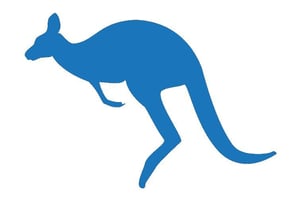2 Reasons Your Website Has A High Bounce Rate
 Your bounce rate is the percentage of visitors to your website that leave after viewing just one page. The lower your bounce rate, the more pages people will see and, generally, the longer they will stay on your website. This gives you more of an opportunity to sell them on the products and services you provide. The stat can be easily checked in Google Analytics. A low bounce rate could be around 30% and a very high bounce rate would be anything above 55%. Here are 2 reasons your website has a high bounce rate.
Your bounce rate is the percentage of visitors to your website that leave after viewing just one page. The lower your bounce rate, the more pages people will see and, generally, the longer they will stay on your website. This gives you more of an opportunity to sell them on the products and services you provide. The stat can be easily checked in Google Analytics. A low bounce rate could be around 30% and a very high bounce rate would be anything above 55%. Here are 2 reasons your website has a high bounce rate.
1: Slow Loading Pages
When a user clicks on to your website, you really only have a few seconds (varies by device) to impress them. If your website takes too long to load, people simply won’t wait and will move on to one of your competitors sites.
This leads to a high bounce rate because even if a visitor waits for the first page to load, they will be far less likely to click another link and wait again. Slow load speeds can be caused by a wide variety of issues, but one of the most common and easy to fix causes are image files that aren’t properly suited to their purpose. Make sure your images are fit for purpose to boost load speeds.
2: Deceptive Meta Descriptions & Title Tags
When someone reads your title tags and meta description and choose to click on your website, they expect to be met with a page that makes sense to their query. For example if your title tag said “Web Design Cork” and your meta description went on to discuss how you design websites in cork, but the page visitors were brought to was about Google AdWords, they would be rightly disappointed.
This can result in a very high bounce rate as it is not the content that users are looking for so they will tend not to trust your site and leave without clicking any other links. This can happen by complete accident or as a click bait tactic, either way you will need to reassess your meta descriptions and title tags. Start off by taking your pages with the highest bounce rates and making sure their title and description match the content that’s actually on the page. If they don’t then you can either rewrite the content to suit the title and description or edit the title and description to more accurately describe the page.
High bounce rates can cost you a huge amount of potential leads and customers. Reduce your bounce rates by improving website load speed and by writing clear and accurate titles and meta descriptions. If you need help lowering your bounce rates contact 3B1 Media & Marketing today.
